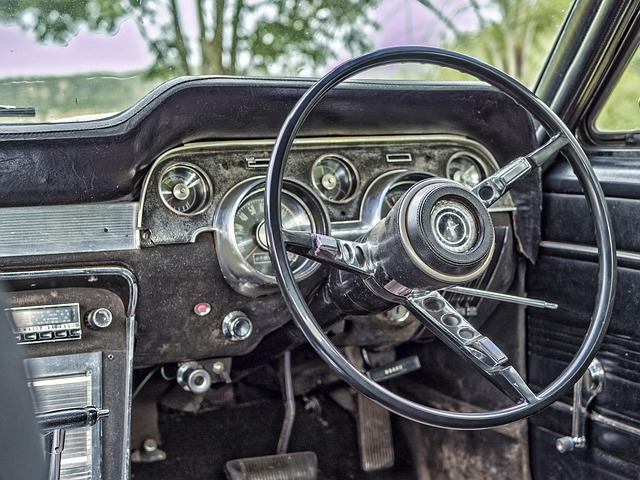Looking to register your car in California? This guide walks you through the step-by-step process, ensuring a smooth transition. From understanding eligibility requirements to gathering essential documents and completing the DMV’s vin verification, each phase is clearly explained. Learn how to fill out the application, pay registration fees, and receive your official California registration papers. Streamline the process today!
- Understand Eligibility Requirements for Car Registration
- Gather Necessary Documents for DMV Visit
- Perform Vehicle Identification Number (VIN) Verification
- Complete Application and Pay Registration Fees
- Receive Your California Registration Papers
Understand Eligibility Requirements for Car Registration

Before you begin the registration process, it’s crucial to understand the eligibility requirements set by the California Department of Motor Vehicles (DMV). To register your car, your vehicle must meet certain criteria. One key step is ensuring the car has a valid and accurate Vehicle Identification Number (VIN) inspection. The DMV uses this unique identifier for verification during the registration process.
A reliable way to conduct this VIN inspection is through a mobile vin verifier. These services allow you to get a digital copy of your vehicle’s history, including its origin, ownership records, and any reported accidents or damages. This digital proof can streamline the registration procedure at a DMV office, making it easier for you as a car owner in California.
Gather Necessary Documents for DMV Visit

Before heading to the DMV, make sure you have all the essential documents in order. This includes your vehicle’s registration form, which can be obtained from the California DMV website or picked up at a local field office. You’ll also need proof of insurance, which should display your vehicle identification number (VIN) and policy details. A valid driver’s license or state ID card is mandatory for the transaction.
For added convenience, many individuals opt for a mobile vin inspection or mobile vin verification service. These services send a professional to your location to complete the VIN verification process, ensuring you can register your vehicle without the hassle of visiting a DMV office. Having all these documents ready will streamline the registration procedure and help avoid any potential delays.
Perform Vehicle Identification Number (VIN) Verification

Before you can register your car in California, it’s crucial to perform a Vehicle Identification Number (VIN) verification. This step is essential as it ensures that the vehicle you’re trying to register is genuine and has not been reported stolen or has any outstanding issues. You can do this by taking the car to a designated DMV location or using a mobile vin verification service, where a professional will use specialized tools to cross-reference the VIN with national databases.
A mobile vin inspector can offer convenience, especially if you have limited time or are unable to visit a DMV office. These services utilize up-to-date technology and provide accurate results in no time. In terms of cost and efficiency, a mobile vin verifier is often a preferred option for Californians looking to register their vehicles smoothly and without hassle.
Complete Application and Pay Registration Fees

After gathering all the necessary documents, it’s time to complete your car registration application at a California DMV office or online. The process involves filling out Form SM-45, which requires accurate and up-to-date information about your vehicle, including its make, model, year, and VIN (Vehicle Identification Number). A crucial step in the registration process is the DMV vin verification, ensuring that the details match those on record with the manufacturer. This can be done conveniently through a mobile vin inspection or by visiting a local DMV office for an in-person vin inspection.
Once your application is complete, you’ll need to pay the registration fees. These fees vary based on several factors, such as whether it’s a new or used car and its age. Acceptable payment methods are typically cash, credit card, or debit card. After successful submission and payment, the DMV will issue your vehicle registration, allowing you to legally operate your car in California.
Receive Your California Registration Papers

After submitting your application and required documents at the California Department of Motor Vehicles (DMV), you’ll receive your California registration papers. Before driving your newly registered vehicle, ensure that all the information on the registration is accurate and matches your car’s details. This includes the Vehicle Identification Number (VIN) – a unique code that identifies your specific vehicle.
One convenient way to verify your VIN before final registration is through a mobile vin inspection or mobile vin verifier service. These services offer a quick and easy way to confirm your car’s details, including its history and any potential issues, using just your smartphone. By ensuring your VIN is accurate, you’re one step closer to enjoying your freshly registered California vehicle on the open road.
Registering a car in California involves understanding eligibility requirements, gathering essential documents, performing a DMV VIN verification, completing applications, and paying fees. By adhering to these steps and ensuring accurate information, you’ll successfully navigate the process and hit the roads with a valid California registration. Remember, proper documentation and compliance with state regulations are key to a seamless car registration experience.
